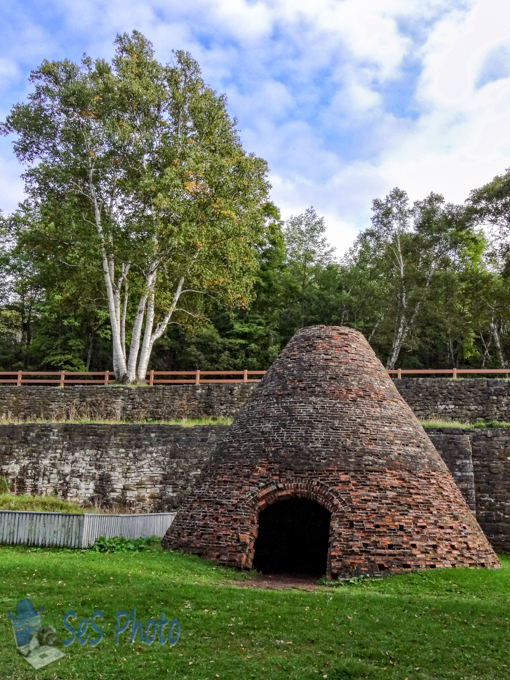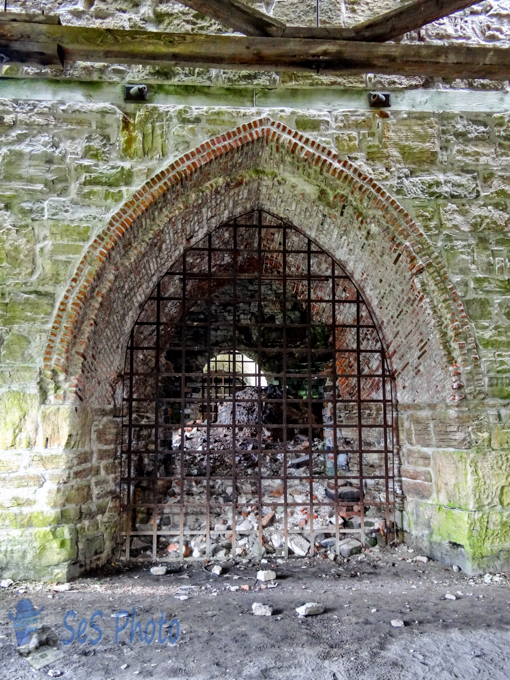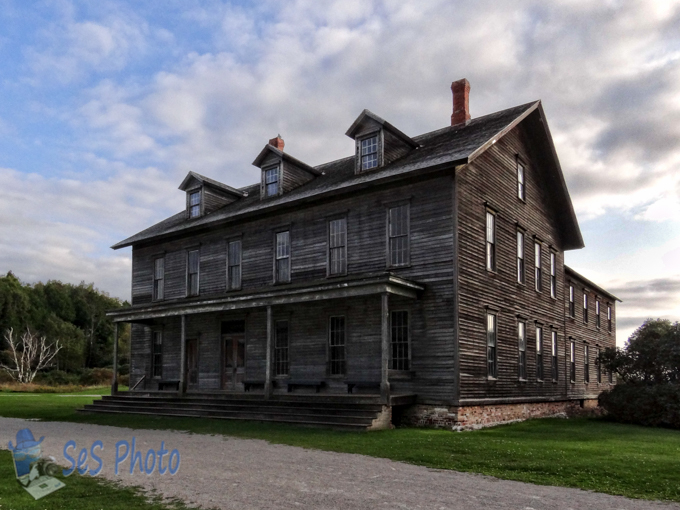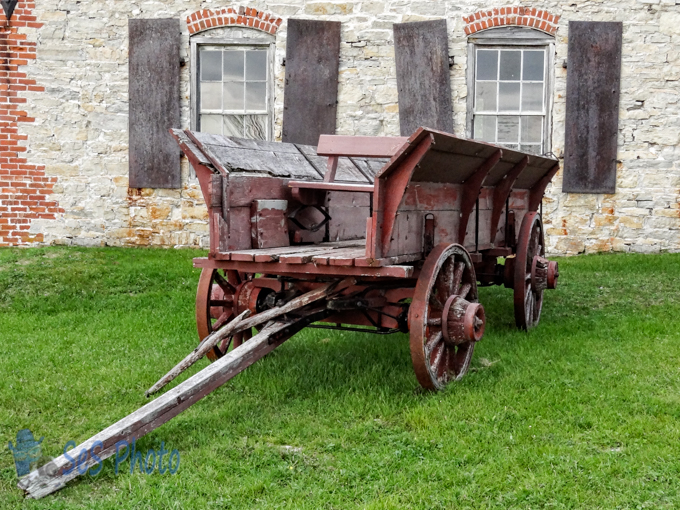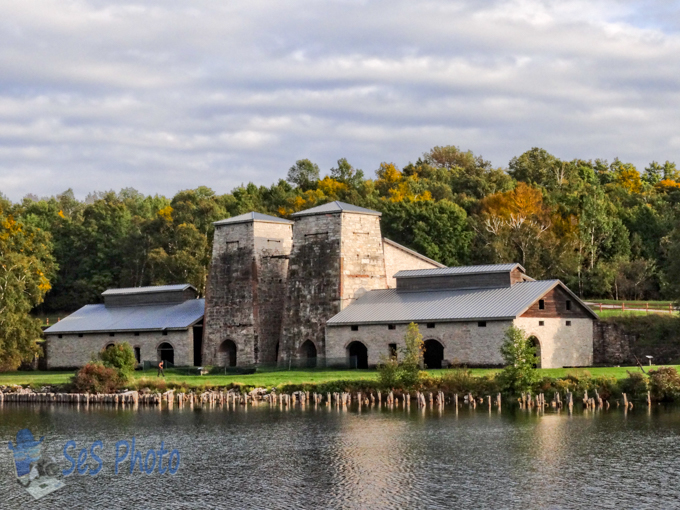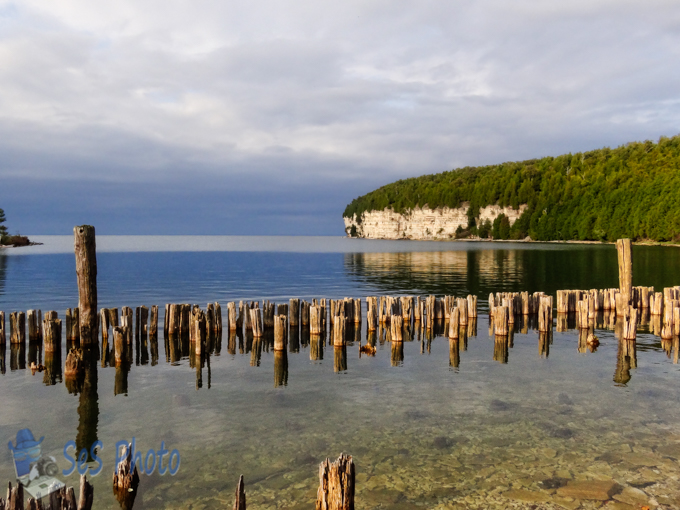During Fayette iron-smelting operations from 1867 to 1891 in Upper Michigan, the company produced a total of 229,288 tons of iron, using local hardwood forests for fuel and quarrying limestone from the bluffs to purify the iron ore. The hardwood was turned into charcoal in kilns like this one to fuel the blast furnaces for the iron smelting process.
The kiln was loaded at the top with thirty-five cords of hardwood and the charring process lasted six to eight days, producing 1,750 bushels of charcoal which was removed by hand from the lower door. In the mid-1880s, more than eighty kilns were located within ten miles of Fayette.
Charcoal Kiln


